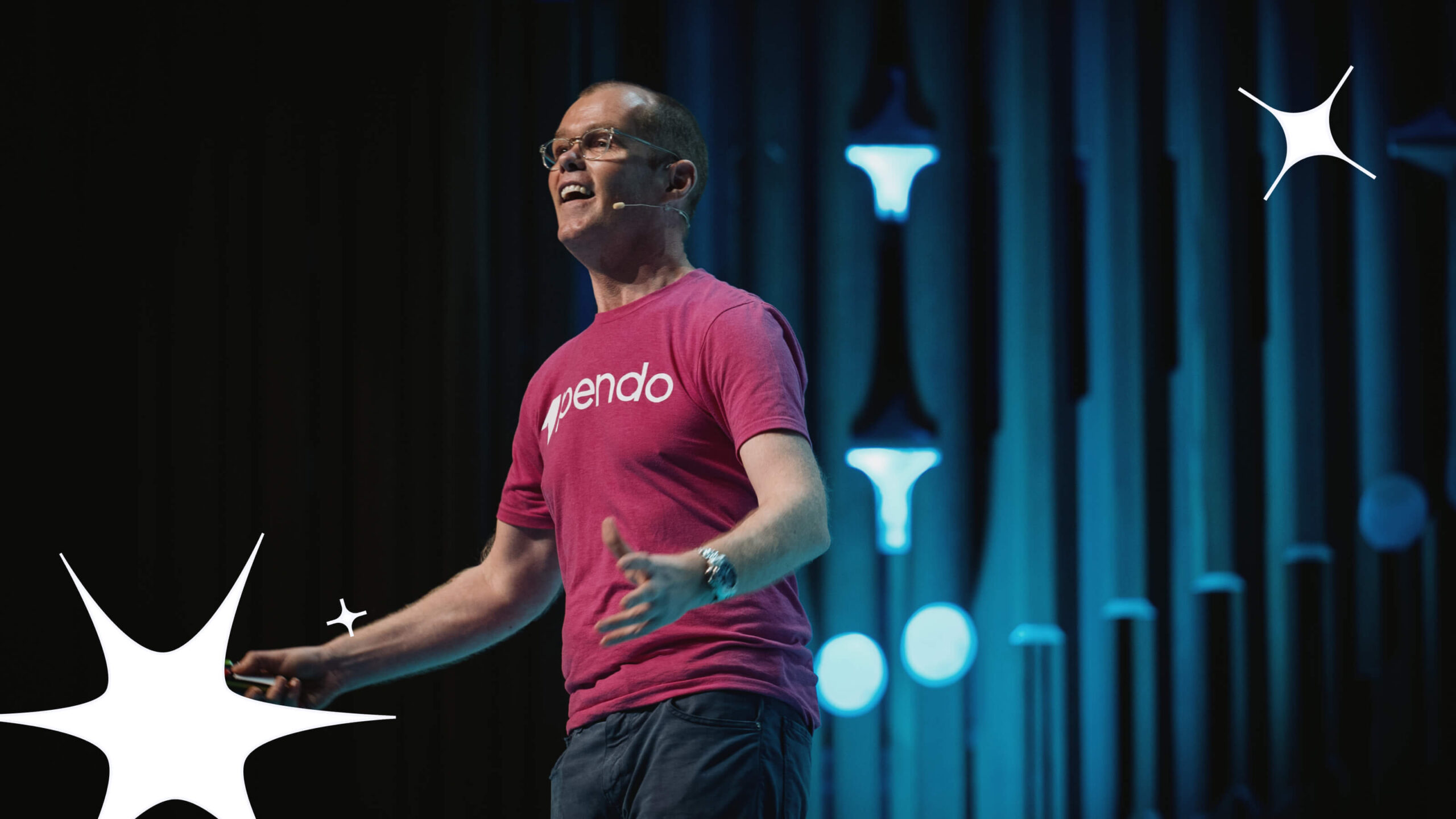Adam Grant knows what it’s like to be wrong. That may sound strange to say of the youngest-ever tenured professor at the University of Pennsylvania’s Wharton School and author of multiple New York Times bestselling books. But as he opened his keynote address at Guide, Pendo’s digital adoption summit, Grant made clear that the future has blindsided him multiple times and in big ways. From founding a pre-Facebook social network only to shut it down as an undergraduate, to failing to invest in a student startup called Warby Parker when he first became a professor, Grant has made his share of blunders. In reflecting on them, he saw a common theme: “I failed to question my assumptions. I was clearly wrong, and I didn’t pause and reconsider.”
In a fast-changing world and workplace, being able to rethink problems and practices has never been more important. A tendency to rest on one’s laurels and do things the way one has always done them out of inertia is a threat to both individual and company-wide flourishing. To meet this challenge, Grant outlined four ways people and teams can make rethinking things easier. These tips are especially relevant in the digital adoption space, where questioning one’s assumptions is key to successful workplace transformation.
Rethink your mindset
A lot depends on how we go about making decisions and communicating with others. In surveying different modes of thinking, Grant outlined a spectrum. Least productive is thinking like a cult leader–one is always right, full stop. In this mindset, reconsidering one’s position is not possible, let alone desirable. Data points become irrelevant at best, a problem to be argued away at worst.
Grant made the case for thinking like a scientist as the best alternative to this and other mindsets in which we seek out confirmation of our preexisting beliefs. “Don’t let your ideas become your identity,” he counseled. People who think like scientists treat their own position as a hypothesis to be tested, and are open to changing course if the data suggest it. In other words, “You have to be as motivated to look for reasons why you might be wrong as you are to search for reasons why you must be right.”
Thinking like a scientist is essential to digital adoption done right. Change managers may undertake a project with a preconceived notion of why their adoption plan works best, but if they fail to consider scenarios in which they might be wrong, they are doomed to failure. Instead, they should take an evidence-based approach. The Pendo digital adoption solution, for example, provides robust behavioral analytics for managers to study existing workflows and how employees are spending their time in software. Embracing the scientific mindset, teams can use these analytics to rethink their assumptions about how effective their digital transformation plan will be and how well it fits with existing behaviors. The path to success in digital adoption starts with testing one’s assumptions about what that success looks like.
Build a challenge network
Part of thinking like a scientist is being in a position to hear meaningful views opposed to one’s own. For Grant, that means rethinking our social networks and the purpose they serve. Having a support network to fall back on and draw encouragement from is an important part of navigating work and life. But just as important, Grant argued, is to have what he called a challenge network. This is a network of people “who tell you the uncomfortable truths instead of the comforting lies.” The transparency and candor a challenge network provides help one focus on possible weak points and consider all angles of a problem.
In the digital adoption realm, building a challenge network starts with soliciting the voice of the employee. Pendo’s digital adoption solution captures employee feedback through in-app polling and surveys. At the same time, it provides a comprehensive feedback management system that lets teams see and fix what isn’t working and make what is working even better.
Create psychological safety
Employees need to be comfortable enough in the workplace to feel empowered to do their best work. For that to happen, companies have to create a sense of psychological safety. As Grant explained, psychological safety is “that impression that you can take a risk and be candid without the fear you’re going to be punished.” It’s central to being able to rethink because it encourages employees to admit their mistakes or pain points and learn from them. “When people lack psychological safety,” Grant explained, “they hide their errors, and then people are more likely to repeat them, not rethinking the practices that were causing them.”
When done right, digital adoption puts employees in a position to thrive when using software. In order to thrive, however, they have to feel comfortable with the apps they’re using and empowered to let managers know where they’re struggling. Actively soliciting candid feedback is foundational to fostering a sense of psychological safety in the digital workplace. What’s more, solutions such as Pendo allow teams to tailor guidance to employees based on specific pain points, as well as notify those employees about how they’re incorporating their feedback into future guidance. The right digital adoption solution thus actively encourages teams to be honest about what’s working and what’s not, and gives them a sense of empowerment that their concerns are not going unaddressed.
Get the best ideas on the table
It’s intuitive to think that a group brainstorming session will lead to more and better ideas. After all, if two heads are better than one, doesn’t it follow that five or ten heads are better than two? Grant explained that although it may seem like group meetings will lead to better results, there are usually three things that go wrong. First is production blocking. As Grant explained, “We can’t all talk at once; some ideas get lost.” Second is the threat to one’s ego. If someone is afraid of looking stupid in a meeting, they may hold off on voicing an idea they’re unsure of but that could well have merit. Finally, there’s the conformity effect. If a senior leader voices an opinion in a meeting, many employees will feel pressure to jump in and agree. “You end up with too much convergent thinking, too little divergent thinking,” Grant warned.
In digital adoption, a team can get the best ideas on the table by letting employees voice suggestions on their terms, and at the time and place it’s most convenient for them. By collecting feedback within an app at whatever time employees are using it, teams can ensure feedback isn’t lost in the noise, stifled out of fear of being wrong, or muted out of pressure to conform.
Grant concluded his talk noting the profound effect 2020 had on our personal and work lives, and saw the present moment as an opportunity. “It is the perfect time to think more like a scientist, to test and learn, to run more experiments, and figure out what changes you want to make.” As they consider the future of their workplace, digital adoption teams should take Grant’s advice to heart.
To learn more about digital adoption and explore other talks from the summit, check out Pendo’s Guide event page.


